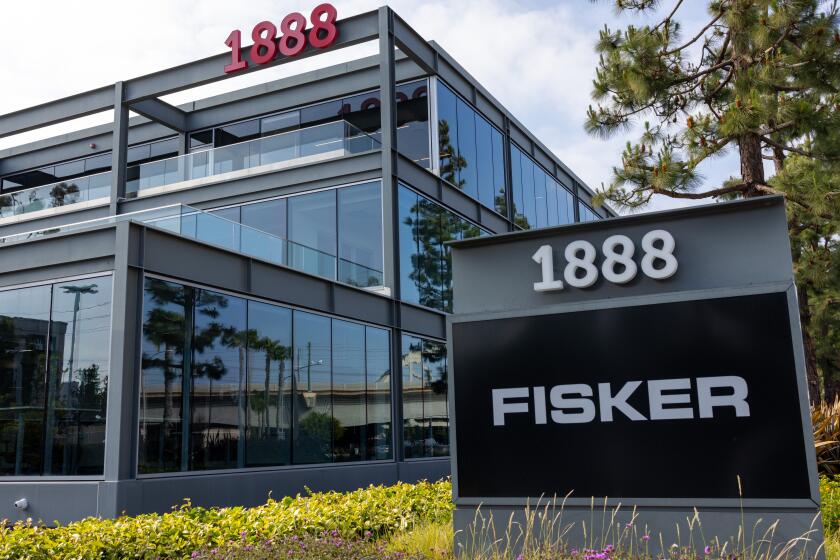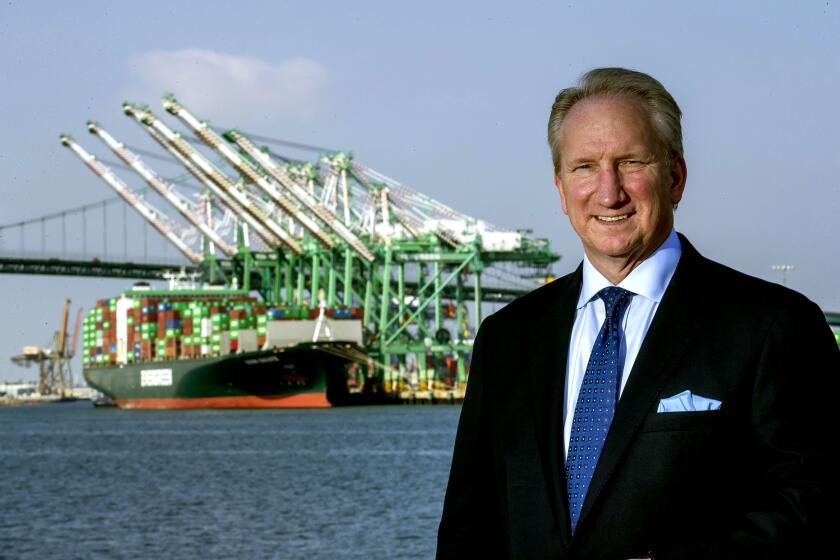Cities Awaiting Edison Signal on Wireless Networks
As cities across the nation roll out their own wireless Internet networks, some Southern California communities are hitting an unexpected bottleneck: Southern California Edison Co.
The state’s second-largest power utility owns many of the residential street lights that cities need to form the backbone of their networks. But Edison acknowledges that it has yet to act on year-old requests for access to its poles and electricity.
That has left cities waiting for a signal.
West Hollywood abandoned plans for a citywide network. Santa Clarita has been waiting six months for Edison. And Cerritos, which launched one of the first wireless networks in the nation two years ago, has linked little more than a third of the city because it has not gained access to Edison poles.
Diamond Bar officials are mulling over more drastic action: Using its power of eminent domain to condemn a foot of space atop 450 of the 5,000 Edison poles in the city.
“The impression we have is that Edison doesn’t want to move forward or doesn’t have a clear internal plan or procedure,” said Ken Desforges, Diamond Bar’s information systems director. “Residents are demanding the service, and we have no other options for building a network.”
Municipal wireless networks are the latest must-have for cities to help attract businesses and ensure reliable, low-cost Internet access for all residents. Before they can build, though, Edison wants to “understand the technology better,” said Douglas H. Kim, general manager of Edison’s carrier solutions division. “We are an electric utility and want to make sure, first and foremost, that we provide reliable service.”
The company wants to test the wireless transmitters -- which draw about two nightlights’ worth of power from the pole -- to make sure they are “safe for workers and don’t hinder our expansion plans or hurt our infrastructure,” he said.
But cities and wireless vendors in Edison’s 50,000-square-mile service territory ask: What’s to study?
“I think they’re moving much more slowly than the complexity of this problem warrants,” said Charles Haas, chief executive of MetroFi Inc., a broadband wireless builder and operator. “In almost every state, there are hundreds, if not thousands, of wireless access points on light poles. This isn’t rocket science.”
Edison’s hesitation doesn’t affect residents in such cities as Los Angeles and Anaheim because those cities own their own power utilities as well as the poles. EarthLink Inc. launched wireless broadband Internet service in Anaheim last month; Los Angeles is preparing a request for bids.
But MetroFi and other municipal wireless builders are bypassing Southern California cities that don’t own enough light poles to blanket the city with antennas.
“We basically say we’d love to deploy a network but we can’t until you have an agreement with Edison,” Haas said.
In Northern California, Pacific Gas & Electric Co., a unit of PG&E; Corp., received authorization from the state Public Utilities Commission to charge a flat fee for electrical use and has signed a number of private contracts for leases and electricity. Communities throughout Silicon Valley are scrambling to come up with citywide wireless plans.
“The antennas are low-wattage devices, so even with street lights fully powered, the existing wiring can easily handle the added electric draw,” PG&E; spokesman Paul Moreno said. “They also have a consistent energy draw, so it’s easy to estimate usage.”
Southern California cities waiting on Edison fear being left behind technologically. Diamond Bar has no high-speed Internet service available to small businesses and no digital subscriber line, or DSL, service for residents. It wants to contract with a company to build a citywide wireless network.
Edison has owned street lights in Diamond Bar since before the city was incorporated in 1989. The city owns poles in its downtown area and the few traffic lights, which also can be used to mount wireless antennas.
About a year ago, city officials asked Edison about using the light poles. Utility executives told them they would have to study the issue.
“We’ve had almost a full year of discussions with Edison that haven’t really gotten us anywhere,” Desforges said. “They’re always very friendly and they’re not saying no, but they’re not moving forward either.”
The closest Edison could come to a resolution, he said, was to suggest that the city could pay what cellphone carriers pay to attach antennas to utility poles -- as much as $2,000 a month per pole. MetroFi, in contrast, said that it pays other utilities an average of $36 a year per pole.
Besides, said Brian Ganley, the West Hollywood information technology manager who had similar experiences with Edison, “cellphone companies are profit-making commercial entities. They’re not governments trying to provide services to residents.”
West Hollywood started its wireless effort two years ago and quickly realized it needed Edison.
“They said they were supportive and would study the situation,” Ganley said.
Nothing happened.
Edison’s Kim downplayed the public demand for municipal wireless networks, saying that only “a handful of cities” had sought access to poles a year or so ago. The utility also has to decide whether to make private agreements with cities and wireless companies or ask state regulators to set a fee that would apply to every city.
In the meantime, cities such as West Hollywood are trying to figure out alternatives. It settled for a two-block hot spot downtown, where it used traffic lights it owns to mount the antennas.
Basically, Ganley said, “we gave up.”
More to Read
Inside the business of entertainment
The Wide Shot brings you news, analysis and insights on everything from streaming wars to production — and what it all means for the future.
You may occasionally receive promotional content from the Los Angeles Times.








